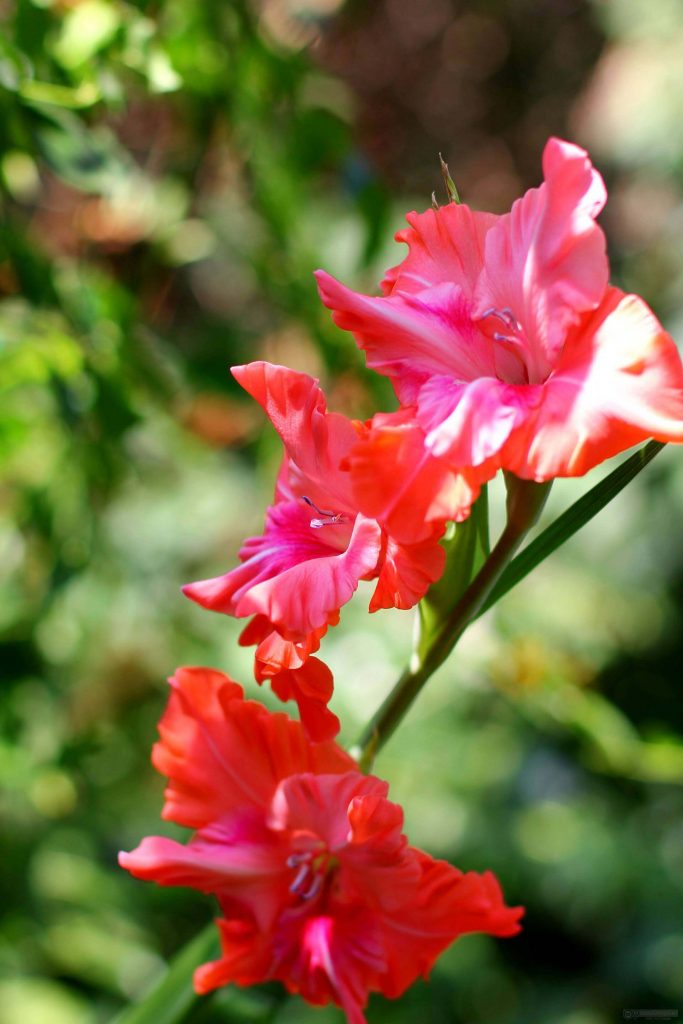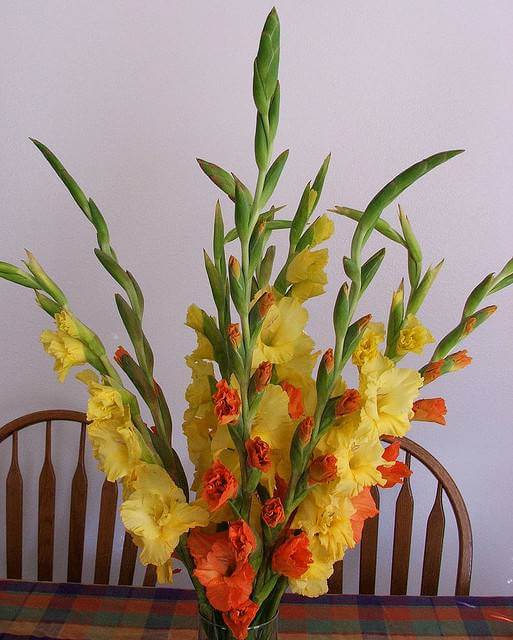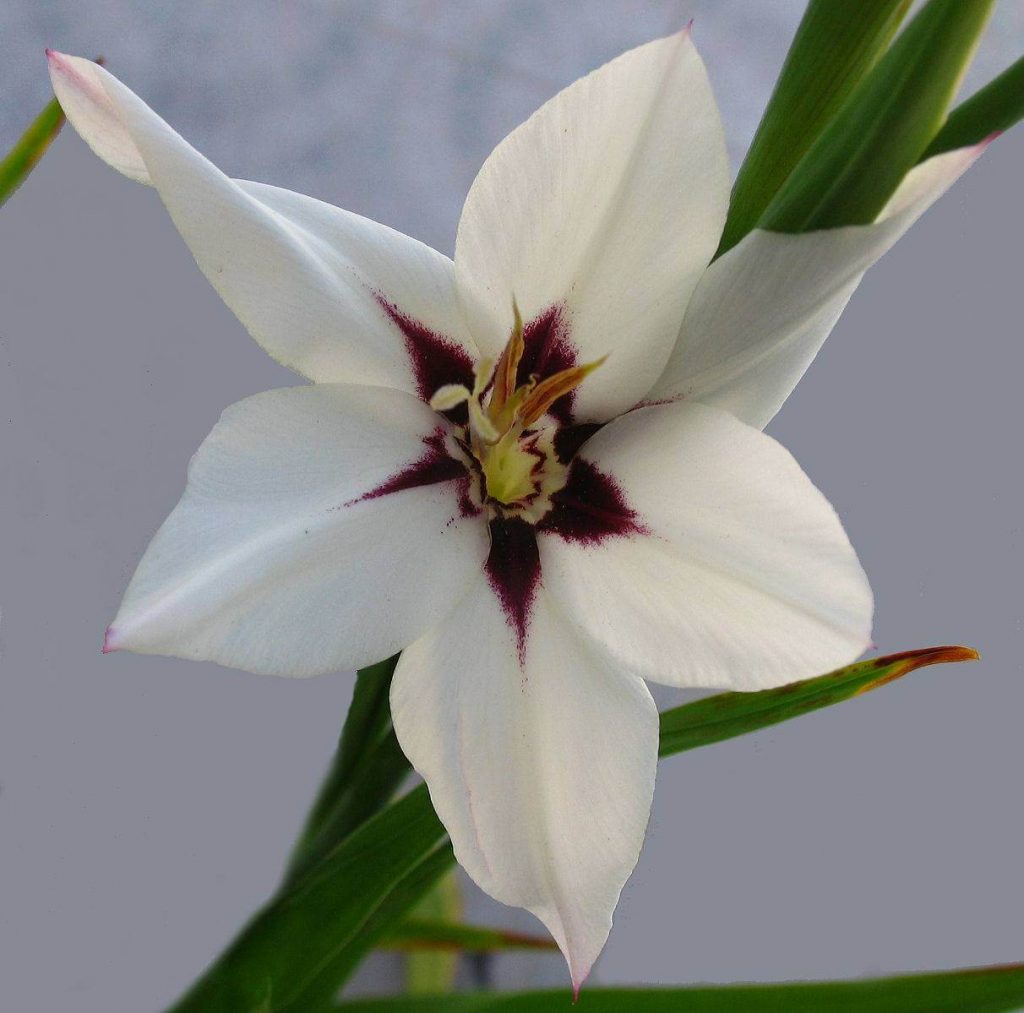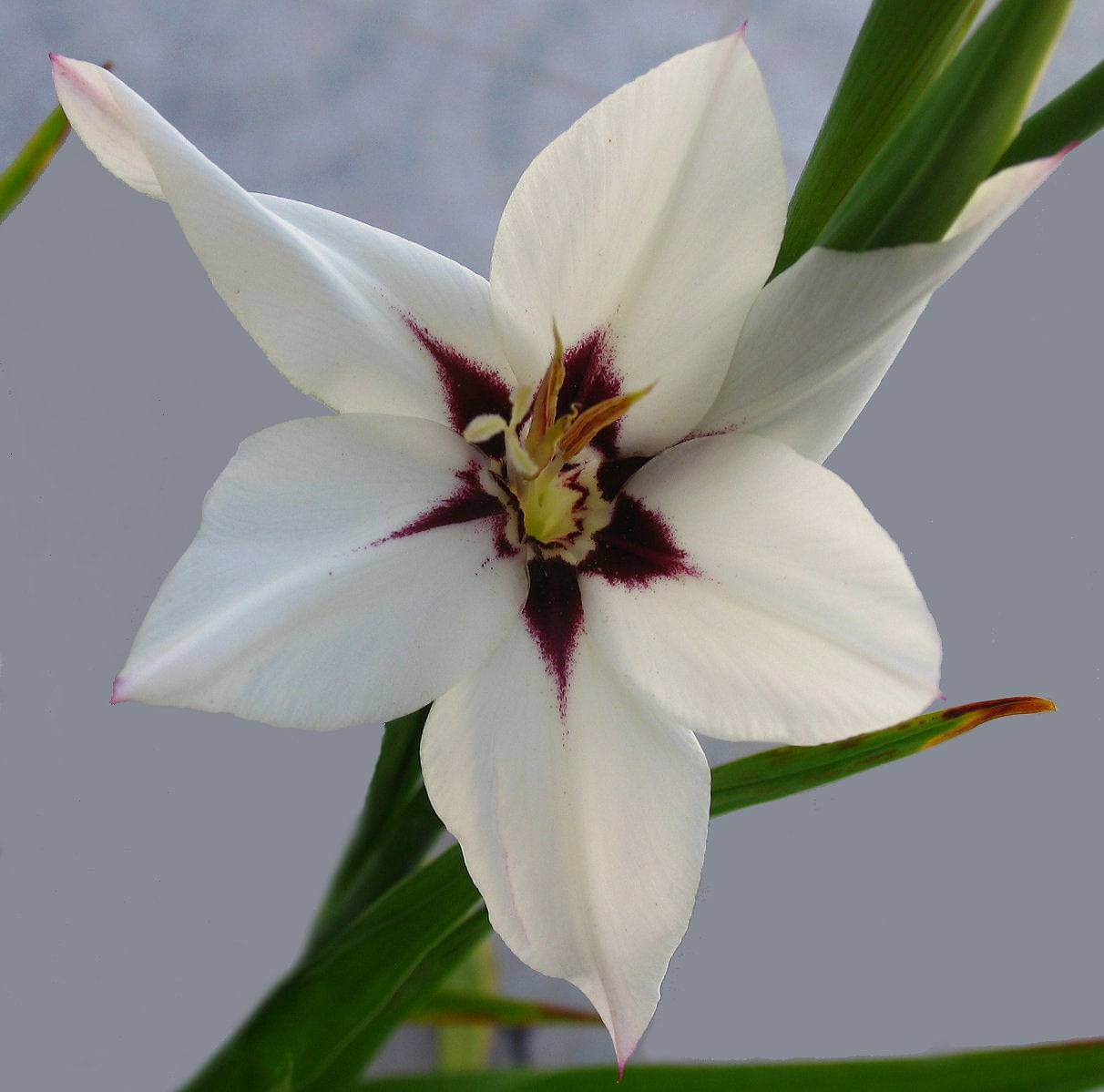
Photo via http://ow.ly/QRdx0
I’m fortunate enough to live near a city park that has the most beautiful collection of red gladioli in the summertime. They grow at one edge of the park along a white picket fence that serves as the perfect backdrop. My grocery store is in the same area, so I make it a point to stop and admire the elegant beauty of those flowers on my way to shop. Seeing the trumpet-like red blooms always reminds me of the corsages we used to create in my family’s flower shop when I was a girl. Around homecoming time, high school boys would come in to order wrist corsages featuring red, white, or pink gladioli for their dates. So romantic! Since the gladiolus is the birth flower of August, I thought I’d dedicate this blog to a unique bloom that never goes out of style.
A Profile of the Gladiolus
Gladioli can grow to be two to six feet in height. You can see why so many people use wooden stakes to keep them secure in the high winds! Six to eight showy flowers bloom from one side of each spike-like stem. Gladioli can be orange, pink, red, purple, cream, blue, salmon, buff, green, white, and terra cotta. My favorite is gladioli in a shade of delicate lavender. These colorful blooms measure about two to eight inches wide. In all of my years of working with flowers, I’ve found the gladiolus to be very popular for wedding receptions, engagement parties, and other formal celebrations. Their long stems and bright blooms make them the epitome of elegance in a tall vase.

Photo via Flickr (mscaprikell)
Caring for Gladioli
Gladioli originated in sub-Saharan Africa, so they definitely prefer growing in areas with warm summer temperatures. I’m happy to say that these flowers are easy to care for. Gladioli flourish in well-drained soil and need full sunlight. Dig a hole about eight inches deep for each of your gladiolus bulbs and plant them about six inches apart. They need to be planted a little deeper than other flowers in your garden so the ground can anchor them when the summer winds pick up. Put about two inches of mulch around your flowers to give them adequate moisture. I suggest you start planting your gladioli in the middle of spring and then plant a few more every two weeks until mid-July. Gladioli take approximately 70 days to flower, so planting a few of them every two weeks will ensure that you have a constant supply of blooming gladioli throughout the summer.
Interesting Facts About the Gladiolus
- The gladiolus is also called xiphium. In Greek, the word “xiphium” means “sword.” This relates to the appearance of the flowers.
- Infatuation, strength of power, and remembrance are a few of the meanings attributed to the gladiolus.
- Some parts of this flower can be poisonous and bring on an allergic reaction.
- The gladiolus is sometimes called the sword lily.

Photo via http://ow.ly/QRgM2
Think about making some space for gladioli in your garden and take the time to enjoy their notable beauty!
![[Avas Flowers] Avas Flowers](https://www.avasflowers.net/newimg/avas-logo-new.png)

